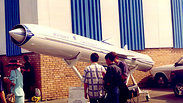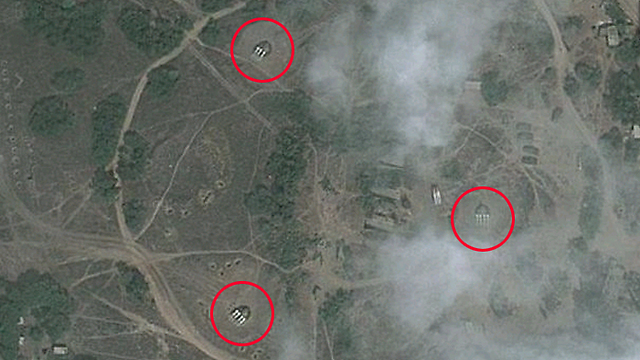
'Hezbollah smuggles advanced guided-missile systems into Lebanon'
Wall Street Journal reports Shiite group transferred systems piece by piece to evade Israeli strikes. US officials believe group doesn't have all components to make systems operational, alleged IAF strikes in Syria bore limited results
WASHINGTON – Hezbollah are smuggling components of advanced guided-missile systems into Lebanon; however the organization is yet to hold enough parts in order to make the systems operational – according to US security officials.
As stated by a Wall Street Journal report Friday morning, US officials believe members of Hezbollah are smuggling the systems piece by piece to evade a secretive Israeli air campaign designed to stop them.
The report reads that according to US intelligence, as many as 12 anti-ship guided-missile systems may now be in Hezbollah's possession inside Syria. "Israel targeted those Russian-made systems in July and again in October with mixed results," according to US damage assessments.
Related stories:
- IAF strikes Gaza targets; rocket launchers destroyed
- US confirms: Israel attacked Syrian missile base
- Report: Israel bombed Syria arms shipment
The news report claims Israel struck inside Syria at least five times in 2013, seeking to take out systems bound for Hezbollah without provoking a direct confrontation.
'Hezbollah is patient'
The American paper adds more details about the Israeli efforts against the smuggling of weapons into Lebanon. According to the report, in late 2012, American and Israeli intelligence agencies received information that Iranian leaders, including the commander of the Quds Force, Qasem Soleimani, were increasingly concerned that the Syrian Bashar Assad regime was in danger of being overrun by rebels.
That meant Iran's window might have been closing to supply advanced weaponry to Hezbollah, General Soleimani argued, according to officials briefed on the intelligence. From Tehran's perspective, Hezbollah's rockets were their first line of defense against an Israeli strike.
Israeli sources, which according to the paper are "familiar with the security deliberations", claimed that in that period of time, "senior Israeli Air Force generals pushed for action to block the transfers."
In its report, the Wall Street Journal greatly relies on American sources that were briefed on the operations, who said that to take out these systems without crossing into Syrian airspace, commanders directed Israeli pilots to perform a "lofting" maneuver designed to extend how far their bombs would travel.
The officials further added that with a burst of speed and altitude, the pilots fling their GPS-guided bombs from ejector racks in a sweeping arc into Syria. In each case, the targets would have to be stationary.
According to the report, the first strike, on January 30, targeted a shipment of Russian-made SA-17 anti-aircraft missiles. In early May, the Israelis, the report reads, tracked a plane they believed was carrying advanced Fateh-110 rockets from Iran to the Damascus International Airport. Israel struck starting on May 2, from Lebanese air space, according to US officials.
The Wall Street Journal further writes that on that same month, Israeli and US spy agencies began to track the anti-ship systems. On July 5, Israel targeted some of the missiles at a Syrian base outside the coastal city of Latakia. Afterward, Israeli and US spy satellites noted ground forces destroyed military equipment at the bombing site to try to trick Israel into believing it had successfully taken out the launchers, officials briefed on the intelligence say.
The paper reports that the US damage assessment showed that Israel managed only to partially strike the target, thus striking the shipment again on October 30. Israeli officials have told US counterparts that the strikes damaged some components, while others are stuck in warehouses in Syria.
"We don't think they have all the components in Lebanon to have a complete system," said a senior US defense official told the Wall Street Journal. But according to the paper, US officials said they don't know the fate of all of the systems, and that they are concerned Hezbollah will bring more components into Lebanon. The sources said the supply lines to Hezbollah and the Assad regime are intertwined, which makes it difficult to distinguish between shipments intended for the Shiite organization and those intended for the Syrian government.
According to the paper, IAF officials have told their American counterparts that commanders have aborted several planned airstrikes because of concerns about causing unintended damage.
In conclusion, the Wall Street Journal notes that American security sources believe Hezbollah is trying to disrupt the Israeli surveillance attempts by intermittently switching on and off communication systems and power lines in the vicinity of the border. "Hezbollah is pretty damn good," said a senior US official. "And they are patient."

















